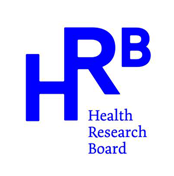“Suicide doesn’t end the pain. It just passes it on to someone else”. The oft repeated words of Kim Kipper, a psychotherapist and mother speaking at a memorial event for four young students in a US high school who had taken their own life (Bonds Staples, 2013), accurately reflect the sad reality of the aftermath of suicide. Those bereaved by the death of a close other in this way often demonstrate a wide range of adverse outcomes and are a recognised at-risk group for future suicidal behaviour (Guldin et al., 2017). Whilst an atmosphere tinged with sadness and loss was the dominant mood whilst these words were spoken, the very act of coming together to remember those who had died in such tragic circumstances may have served as an intervention for participating students, potentially helping to offset the negative outcomes associated with losing someone to suicide.
Research from the University of Limerick and Pieta House, soon to be published in a forthcoming issue of the European Journal of Social Psychology (Kearns, Muldoon, Msetfi & Surgenor, in press), has demonstrated that participation in a large-scale event focused on suicide awareness and remembrance of those who have died by suicide can have a positive impact on the psychological well-being of participants, and that this is particularly true for those most closely bereaved. The event in question is Pieta House’s Darkness into Light, a 5km walk at dawn and the largest collective fundraising event to take place in Ireland each year. And, indeed, it is through the collective nature of this event that we explain these findings.
Over the course of this study we surveyed more than 5000 participants before and after taking part in Darkness into Light. Analysis revealed that the significant increase in psychological well-being noted amongst participants who had lost a loved one to suicide could be explained through feelings of solidarity and togetherness with others at the event, tying into a research framework in psychology known as “the social cure” (Jetten, Haslam & Haslam, 2012). When we recognise individuals and groups as being similar to ourselves, this can provide us with a sense of belonging; a platform for sharing social support; resources to cope with stigma and prejudice, with ultimate benefits for health and well-being. Darkness into light therefore serves an important purpose of bringing those bereaved by suicide together – individuals who can often be isolated in their grief and denied the traditional support networks that accompany a bereavement, due in part to the stigma that continues to surround this issue. This collective event, where suicide loss is common to the vast majority of participants, shows those most closely bereaved that they are not alone. Further, having suicide highlighted and discussed so openly helps to lessen the associated stigma which can also assist with the healing process.
These findings demonstrate that not only is Darkness into Light a hugely effective fundraiser, but it may also be framed as an intervention in terms of psychological well-being for those bereaved by suicide. This is particularly important given, as mentioned previously, this is a group with a heightened risk of future suicidal behaviour. Comparable findings may be predicted for other events serving a similar purpose, including the memorial gathering in the Georgia high school, and particularly where the issue in focus is considered taboo. Finally, this research reiterates the beneficial nature of social inclusion for health and well-being, and the considerable contribution it may serve in psychological interventions.
Michelle Kearns
PhD candidate, Centre for Social Issues Research, Department of Psychology, University of Limerick
Research funded by the Irish Research Council Enterprise Partnership Scheme, in collaboration with Pieta House.
Study collaborators: Orla Muldoon, Rachel Msetfi, University of Limerick. Paul Surgenor, Pieta House.
References
Bonds Staples, G. (2013). After four suicides, a school and community begins the healing process. The Atlanta Journal-Constitution. Retrieved from:
Guldin, M. B., Ina Siegismund Kjaersgaard, M., Fenger‐Grøn, M., Thorlund Parner, E., Li, J., Prior, A., & Vestergaard, M. (2017). Risk of suicide, deliberate self‐harm and psychiatric illness after the loss of a close relative: A nationwide cohort study. World Psychiatry, 16(2), 193-199.
Jetten, J., Haslam, C., & Haslam, S. A. (Eds.). (2011). The social cure: Identity, Health and Well-being. Hove, England: Psychology Press.
Kearns, M., Muldoon, O. T., Msetfi, R. M., & Surgenor, P. W. (In press). From darkness into light? Identification with the crowd at a suicide prevention fundraiser promotes well- being amongst participants. European Journal of Social Psychology.
Early view available at: https://www.researchgate.net/publication/313514232_Darkness_into_Light_Identification_with_the_Crowd_at_a_Suicide_Prevention_Fundraiser_Promotes_Well-Being_amongst_Participants
If you have any questions or comments please contact Martin on m.davoren@ucc.ie

